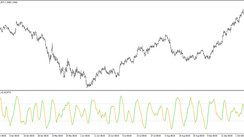Understanding Stop-Loss Orders
A stop-loss order is a pre-determined instruction to sell a security when it hits a specific price, aimed at curtailing potential losses should the security's value dip below that point. It is a pivotal risk mitigation tool for investors.
The Significance of Stop-Loss Orders
The relevance of stop-loss orders extends for multiple reasons. Primarily, they serve as a safety net for investors against significant losses. In a scenario where the price of a security plummets, a stop-loss order triggers an automatic sale, ensuring the investor doesn't incur more loss than they're prepared to shoulder.
Secondly, stop-loss orders assist traders in maintaining discipline. With falling security prices, it's easy for traders to cling to the hope of price recovery, which, if the price decline continues, can lead to substantial losses. Stop-loss orders help traders stay on track, prompting them to offload the security once it hits a pre-set price level.
The Role of Stop-Loss Orders in Trading
The presence of stop-loss orders can substantially influence trading outcomes. By setting a cap on potential losses, they allow traders to safeguard their profits and steer clear of sizable losses. Consequently, this facilitates more consistent trading results and boosts profitability.
Several factors need consideration while deciding the opportune moment for placing a stop-loss order. Firstly, you must ascertain the level of risk you're willing to undertake. Having established your risk tolerance, you can set a stop-loss price in line with your risk profile. Secondly, the volatility of the security in question requires evaluation. For highly volatile securities, it might be prudent to place your stop-loss order closer to the prevailing price. For less volatile ones, a stop-loss order further from the current price might suffice.
Tips for Implementing Stop-Loss Orders
Adopting stop-loss orders across all your trades helps mitigate unwarranted risk exposure.
Regularly reviewing your stop-loss orders is advisable, given changing market conditions, to ensure they remain apt.
Be ready for the activation of your stop-loss orders, as this forms an integral part of the risk management procedure.
Remember, while stop-loss orders are an invaluable tool for traders, they aren't a guaranteed path to profits. Markets can behave unpredictably, making it essential to use stop-loss orders alongside other risk management instruments.
Wrapping Up
Stop-loss orders are a crucial part of any trader's risk management toolbox. By keeping potential losses in check, they help protect profits and prevent large-scale losses, thereby contributing to consistent trading outcomes and enhanced profitability.





